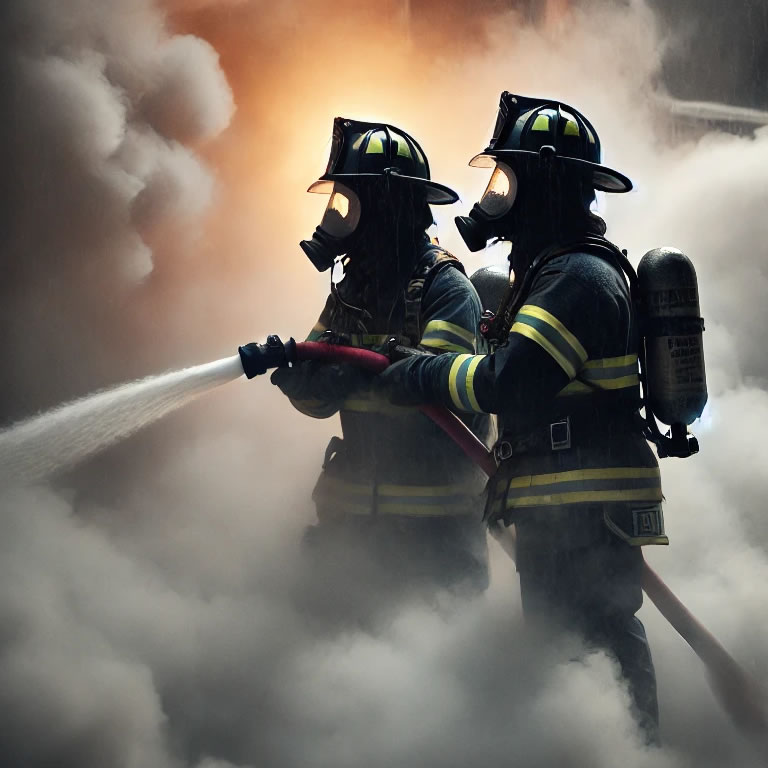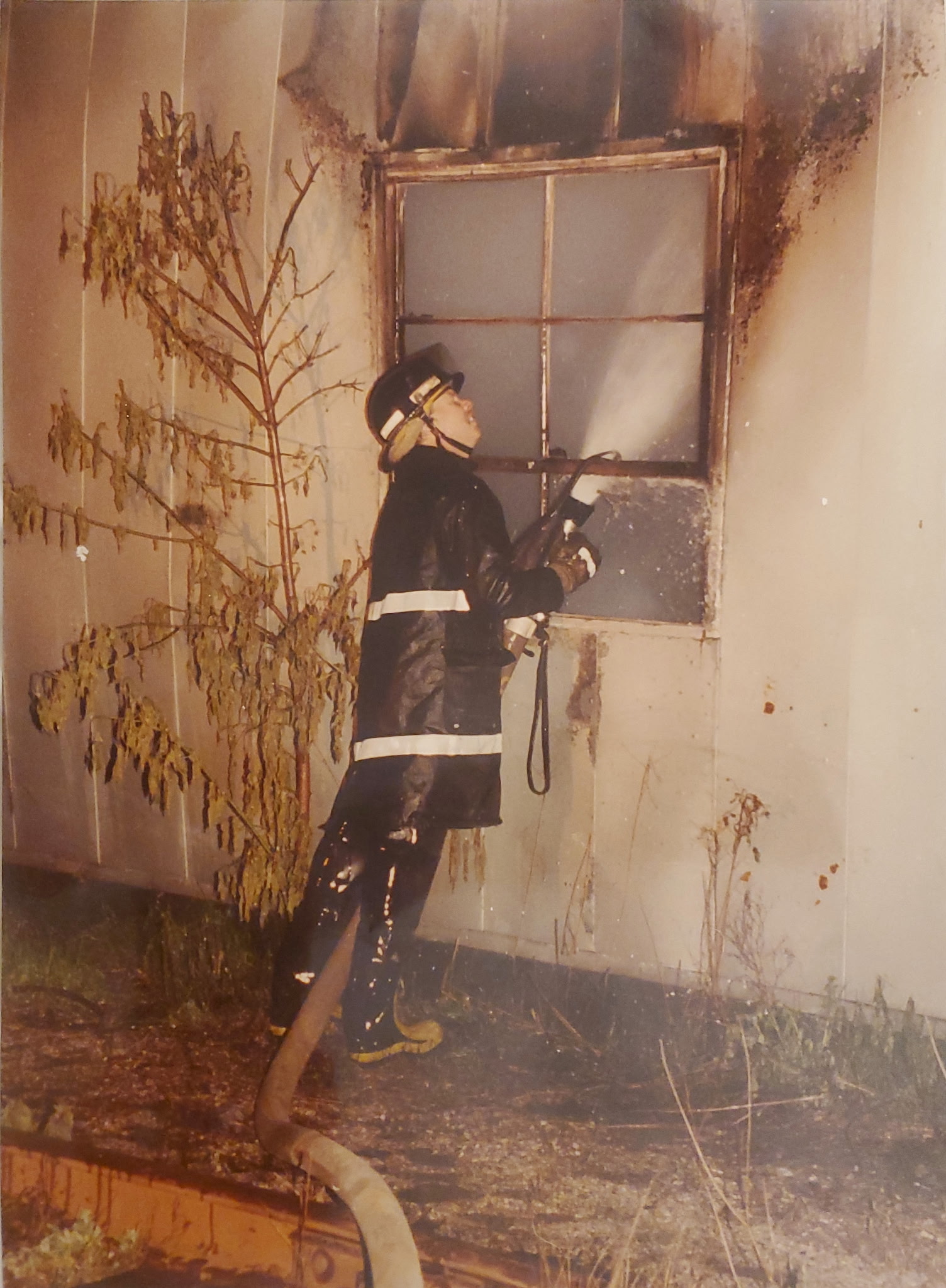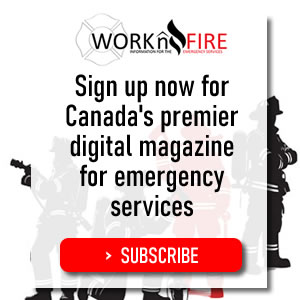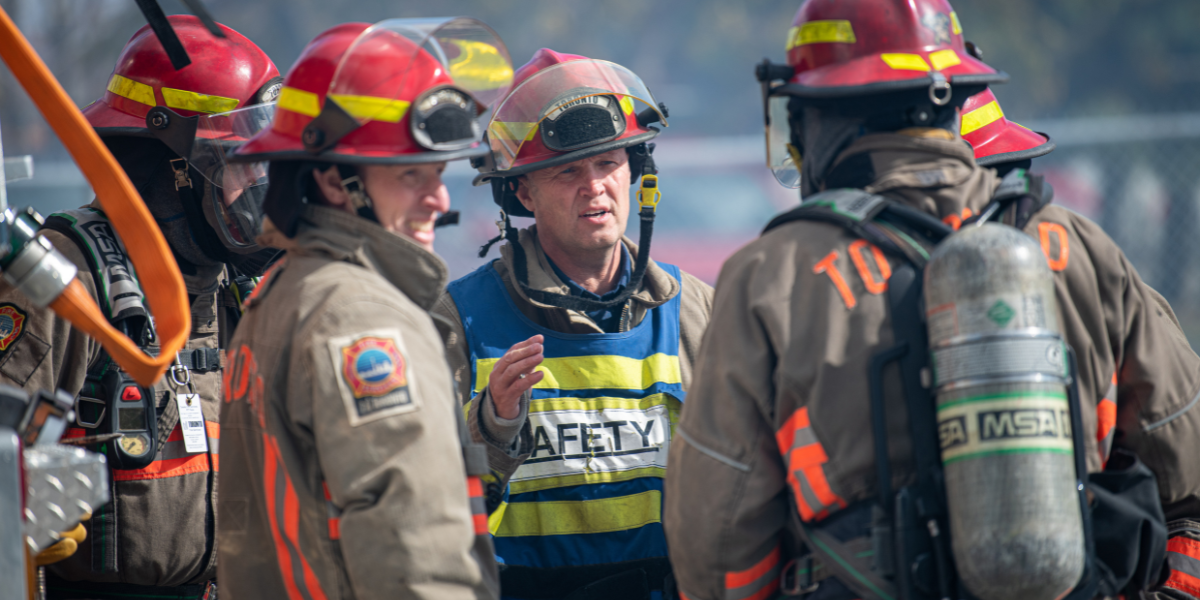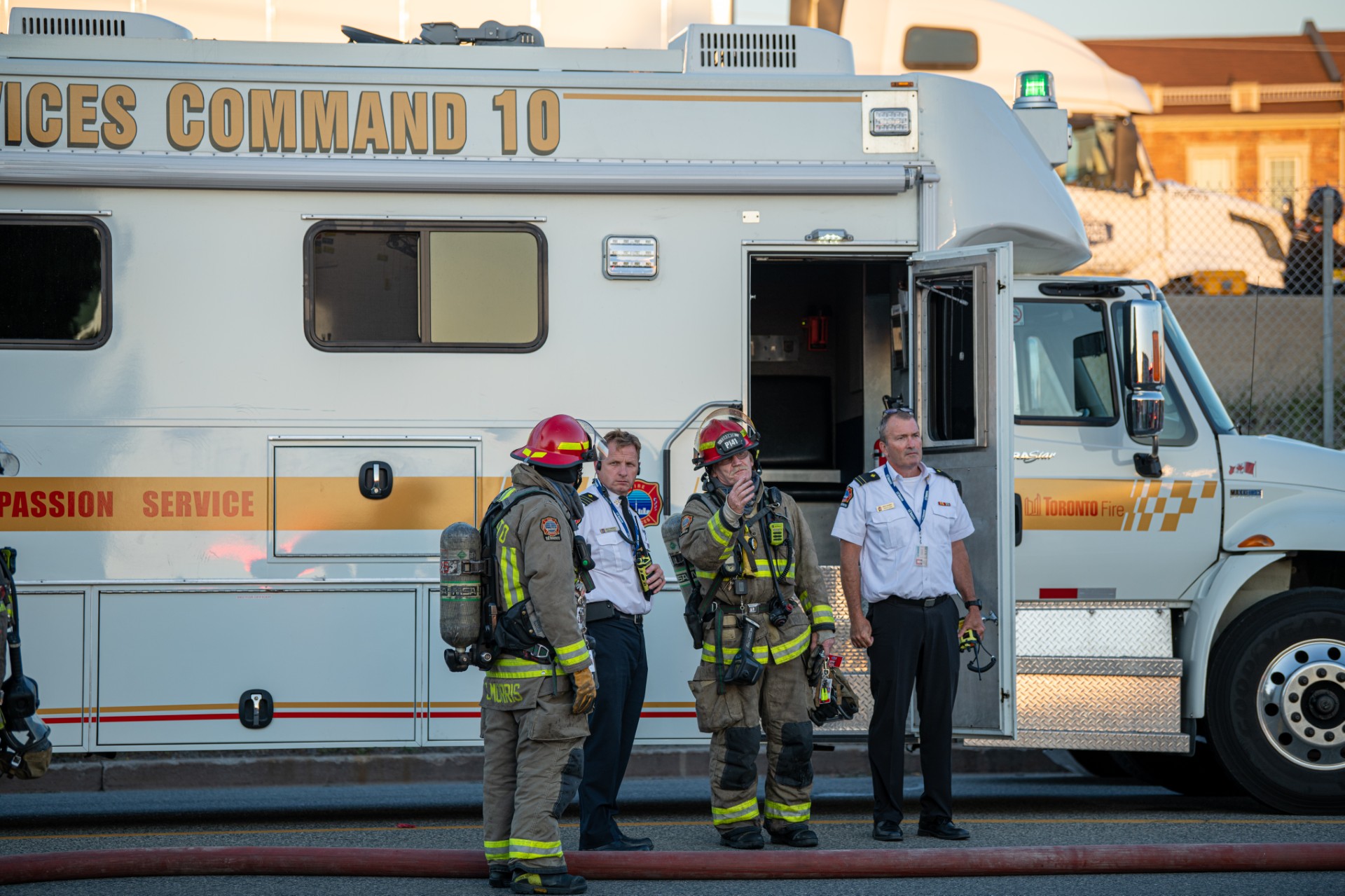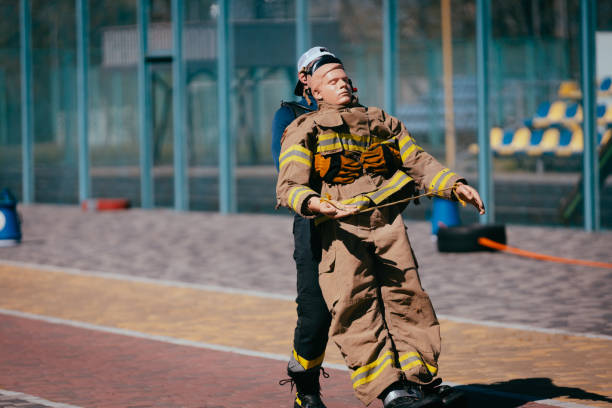Becoming a Firefighter in Ontario
There are a number of different types of firefighters in Ontario, including structural firefighters, wild-land firefighters, industrial firefighters, and aircraft rescue firefighters ("ARFF").
Structural firefighters are what most people think of when they use the term firefighter. Structural firefighting involves fighting fires in buildings and their surrounding environments, and protecting the lives of people nearby. Structural firefighters do this by responding, applying water or other extinguishing agents, performing search and rescue, and generally overhauling fire scenes.
Structural firefighting most often occurs in cities, towns and villages, sometimes called 'municipalities', with organized, local political structures overseeing municipal fire departments.
Because municipalities require infrastructure in the form of roadways, power and other utilities; air, rail and water transportation systems, etc., modern municipal firefighting also involves a broad range of related activities which may include;
Many municipal and other fire departments also require firefighters to be trained to advanced levels in emergency medical care beyond typical 'first-aid' levels, especially to support 'tiered responses' under a philosophy that in a medical emergency, scene and victim stabilization is a first priority that can be performed by all emergency response agencies until advanced capabilities arrive. In practice, this means that for medical emergencies classified as serious by 911 protocols and dispatchers, all traditional first response agencies – Police, fire and EMS (Emergency Medical Services) – will be dispatched.
Some larger municipal fire departments may also have coordinated, cross-agency teams for critical events such as large crowd control.
There are generally two types of municipal firefighters in Ontario – volunteer firefighters and career firefighters. Some 'composite' departments may utilize both.
Volunteer fire departments rely on local citizens to be available to be called on response to emergencies. There may or may not be compensation, benefits and job protection associated with that availability. The level of training and other qualifications required for becoming a volunteer firefighter may vary significantly.
Career fire departments in Ontario are unionized, full-time work environments subject to collective agreements bargained by local professional firefighter associations assisted by the Ontario Professional Fire Fighters Association (OPFFA) and the International Association of Fire Fighters (IAFF). The Toronto
Professional Fire Fighters Association (TPFFA) is an example of a local professional fire fighter association – in this case IAFF Local 3888. Requirements for becoming a career firefighter in Ontario are typically more stringent and standardized.
LEGISLATION, CODES, AND STANDARDS
Constitutionally, municipal governments (municipalities) are governed in Ontario by provincial legislation, e.g. The Municipal Act. In turn, municipalities may govern activities within their jurisdiction through by-laws and ordinances.
In Ontario, the Fire Prevention and Protection Act (FPPA), administered by the Office of the Ontario Fire Marshal (OFM) contains a number of Parts and Sections governing the organization and operation of fire departments; the activities of firefighters, both career and volunteer; mandates for public fire safety education, and; provision for an Ontario Regulation known as the Ontario Fire Code governing buildings. One of the purposes of the Ontario Fire Code, as stated at Article 2.2.1.1, is to "…limit the probability that, as a result of activities related to the construction, use or demolition of the building or facility, a person in or adjacent to the building or facility will be exposed to an unacceptable risk of injury due to fire."
Many fire departments in Ontario also subscribe to certain 'standards' developed and maintained by independent, often private-sector, agencies. Examples include the Canadian General Standards Board (CGSB), the Canadian Standards Association (CSA), and especially the United States' National Fire Protection Association (NFPA).Firefighters will commonly refer to NFPA standards.
NFPA standards are both numbered and named, for example NFPA 1001 is named Standard for Fire Fighter Professional Qualifications which, according to the NFPA website, "Identifies the minimum job performance requirements for career and volunteer fire fighters whose duties are primarily structural in nature." There are two levels of fire fighter in NFPA 1001 – level I and level II.
Examples of other NFPA standards commonly referred to in firefighting include;
It is NOT typically required that firefighters be overly-familiar with NFPA and other standards. It is usually sufficient that candidates, recruits and firefighters understand that standards exist, that certain fire departments have opted to conform to them, and that conformance will require certain equipment and procedures.
FIRE FIGHTER EDUCATION
Most career fire departments in Ontario will require firefighter applicants to already have firefighter education certification, and most will insist that the education be certified as conforming to NFPA 1001 levels I and II (see above). Many will also require further minimum education certifications such as courses that are certified as conforming to NFPA 471 and 472 and 1072 (see above).
The term "certified as conforming to" is important. There are several independent agencies which certify that the programs offered by educational institutions actually conform to and meet the objectives of the corresponding NFPA standard. They include such organizations as International Fire Service Accreditation Congress (IFSAC) and National Board on Fire Service Professional Qualifications (Pro Board) . IFSAC and Pro Board accreditations are issued by The Ontario Office of the Fire Marshal (OFM). It is prudent to check whether courses you are taking are eligible for IFSAC and /or Pro Board certification.
There are generally two routes to standardized firefighter pre-service education in Ontario – through the Ontario Community College System, or through another educational institution/agency, often private-sector, offering compliant curriculum.
A number of Ontario Community Colleges offer a program typically entitled 'Pre-Service Fire Fighter Education and Training' designed to provide students with the necessary theoretical and practical requirements to meet NFPA 1001 Levels I and II and often NFPA 472. It is typically three semesters in duration consisting of two semesters of in-classroom instruction and a third (partial or full) semester of practical training either on- or off-site. Community college programs are typically Ontario Student Assistance Program (OSAP) eligible. You should check eligibility for private programs.
There are also a number of private-sector educational institutions/agencies which offer NFPA 1001 I and II and sometimes related courses such as NFPA 472. One example in Ontario is the Fire and Emergency Services Training Institute (FESTI) located on the grounds of the Greater Toronto Airports Authority (GTAA) at Pearson Airport which offers an online delivery mode for the theoretical portion of the NFPA 1001 curricula with an intensified practical component over a comparatively shorter period of time.
Some Ontario students choose to travel to other provinces and even the United States to train to NFPA 1001 because the total program time is shorter than elsewhere.
Many Ontario fire departments requiring applicants to be previously educated in fire knowledge and skills will advertise as accepting either Ontario Pre-Service Fire Fighter Training and Education Program, or a certified NFPA 1001 Fire Fighter I and II Program, but you should check before deciding on which program to take, or whether you need to take one at all.
FIRST AID QUALIFICATIONS
There are several levels and types of first-aid certifications available with and without Cardio-Pulmonary Resuscitation (CPR) and/or Automated External Defibrillator (AED) training. You can review the previous firefighter job postings for the department you are targeting, and even contact fire departments to inquire about anticipated future requirements. However, there does appear to be a trend in Ontario toward fire departments requiring applicants to first obtain first aid certification at the level of Emergency Medical Responder (EMR) as a minimum qualification for consideration for employment. Further, while EMR certification generally expires after three years, some fire departments are requiring applicants to be current within a shorter time frame, such as one year.
Because it is difficult to predict the currency requirements, many applicants find themselves quickly searching for EMR refresher courses in the time period between the posting for firefighters, and the closing date for applications to be submitted.
Since the EMR refresher course is shorter than the original EMR certification course, it does seems prudent to obtain the EMR qualification as soon as possible after deciding that you want to become a firefighter.
DZ LICENCING
Most, if not all fire departments in Ontario are requiring applicants to have a currently valid class D driver licence with a Z (air brake) endorsement as a minimum qualification at the time of making application for position as a firefighter.
There are numerous private-sector courses available.
SKILLS, AGILITY, APTITUDE
Most fire departments insist that firefighter applicants produce satisfactory proof of aptitude, skills, and agility for the firefighting position as a minimum qualification for application to the firefighter position.
Aptitude tests generally measure such things as reading comprehension, general reasoning, numerical operations, perceptual speed, mechanical knowledge, problem solving, and spatial ability.
Skills tests measure ability to perform skills related to performing work as a firefighter, e.g. laying and connecting hose, raising and lowering ladders, using related tools, swinging and cutting with an axe, and performing related evolutions.
Agility testing may be similar to physical fitness testing and may involve a treadmill test for cardio fitness and VO2 MAX measures.
Tests may vary across different fire departments with some conducting some tests, e.g. aptitude, in-house, and others, e.g. fitness, through independent facilities.
There is a growing trend in Ontario for fire departments to require applicants to produce certificates indicating satisfactory completion of some or all of the Candidate Testing Services (CTS) assessment processes conducted by Ontario Fire Administration Inc. (OFAI), a subsidiary of the Ontaro Association of Fire Chiefs (OAFC). If you think your target fire department will require OFAI CTS completion, you should carefully review the OFAI CTS website.
There are six certificates issued by OFAI, and each certificate has a unique expiry date.
The tests are rigorous and challenging and require considerable preparation.
Fire departments vary in their requirements for currency of the OFAI certificates with some requiring currency at time of application AND throughout the recruitment process until offer of employment. Since the certificates may expire at different times, it can be challenging to monitor each expiration date and assure not only that you have arranged for retesting as required, but also that you are able to renew a certificate by passing the requirements for that certificate before your current certificate expires. You should also consider the logistical problems associated with the possibility of failing and having to retake a test during an application process, including limited scheduling and limited offerings by OFAI.
INTERVIEW
The interview is typically the last step in the firefighter recruitment process. It will often consist of an approximately 45 minutes responding to questions before a panel consisting of about three fire officers, or combination of fire service personnel and Human Resources professionals.
You should begin researching and practicing for a potential interview early in your quest to become a firefighter.
There are a number of online and professional interview coaching resources available.
Some links referred to in this article:

